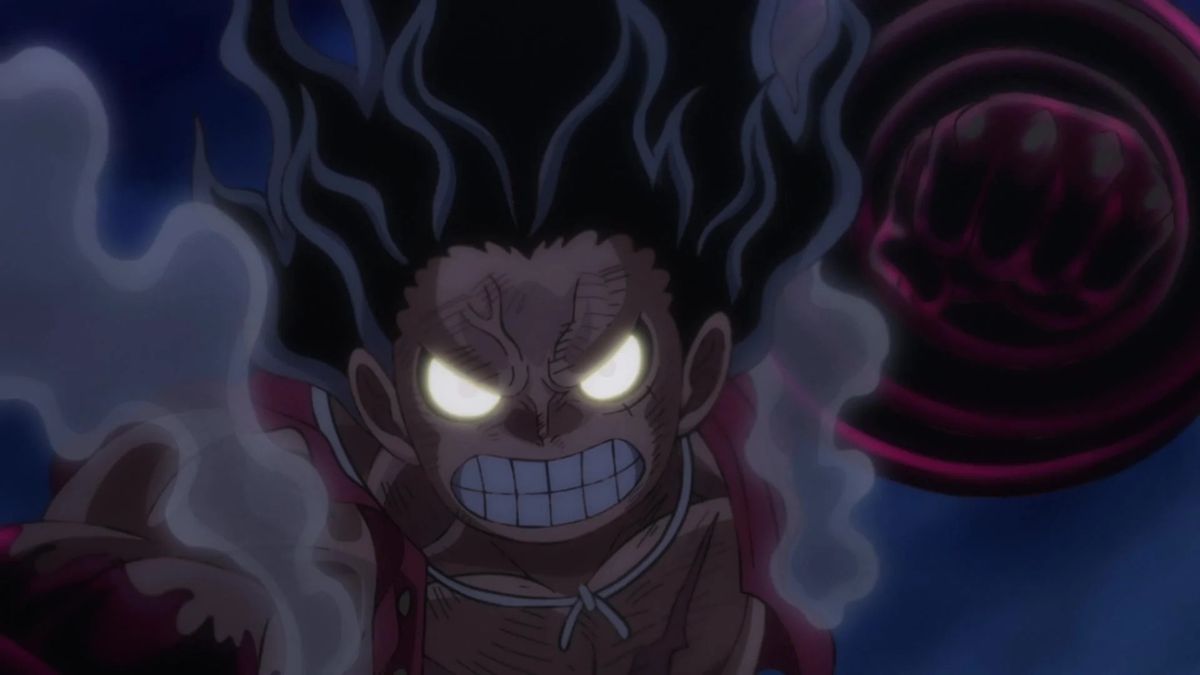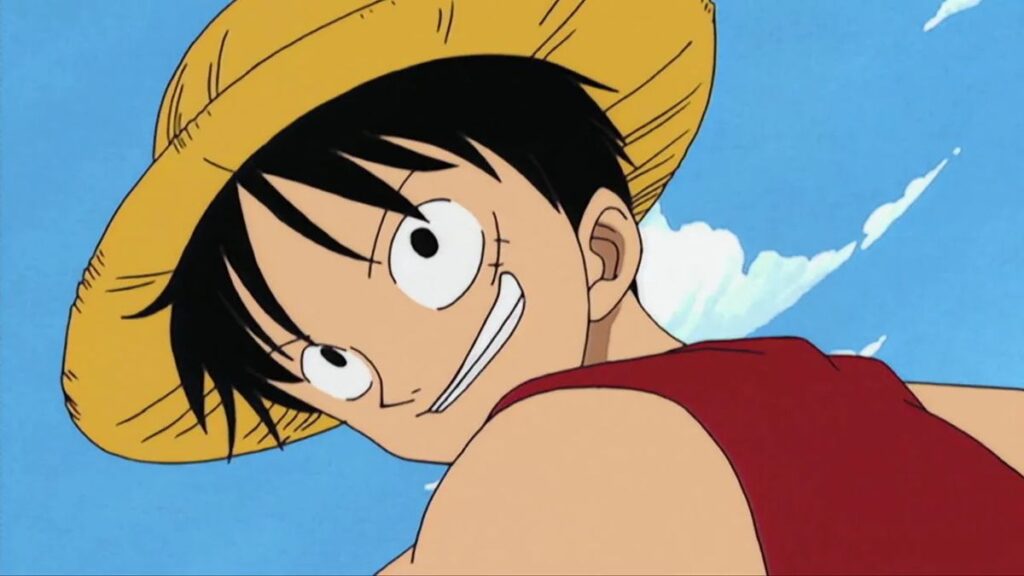One Piece begins with the death of a symbol. Gol D. Roger, the King of the Pirates, is executed in front of a massive audience, some of which are young pirates that either idolize him or see his demise as a way to clear space for themselves. Not a lot is known about the big, grinning dude — few people are aware of the details of his life, what his personality is like, or how the navy even managed to catch him. However, the message that he imparts is anything but a mystery: He has left a treasure out there, a “One Piece” that will defy your imagination. And now it’s up to you to find it.
Fast forward decades later and Monkey D. Luffy, the main protagonist of One Piece and the captain of the Straw Hat crew, seeks that treasure. It’s his dream to be King of the Pirates, and with his latest transformation into the outlandishly fun “Gear 5” form, he gets one step closer to that goal. It’s a long-awaited new form, the kind of thing that leads anime fans into uproarious debates and fan theories. But perhaps its most important contribution is that it effectively brings the story of One Piece full circle, even though series creator Eiichiro Oda seems to have a decent amount of narrative left to go.
One of the most important things to recognize about One Piece is that the symbolic quality of something is often just as important as its tangible reality. No one except for a scant few actually know what the One Piece is, but it represents both the ultimate call of adventure and a siren song for generations of pirates. The title “King of the Pirates” is less an indicator of the strongest person in the series and more so the person who serves as the aspirational emblem for their seafaring brethren. Early on in the manga’s run, a fan asked Oda why Luffy didn’t kill his opponents. His answer was that the ruination of their dream, of having their ideals stomped flat, was “as bad as death.”
All of this amounts to a series that basks in its “Romance Dawn,” the horizon of the sea being ripe for both your journeys and the wishes that lie inside your heart. And there’s no better figurehead for this thematic throughline than Luffy, a kid who shuns any typical character arc through what seems like sheer force of will. His desires in the first episode are the exact same as they are in the 1,000th episode, and through the grandeur of his hopes and the faith that he puts in his crew, he remains steadfast. The few times that he has become unmoored, such as after the death of his found-family brother Ace, a reminder of what he has (some pretty rad friends) sets him back on target.
Image: Toei Animation/Crunchyroll

Image: Toei Animation/Crunchyroll
Like Roger, few people know much about Luffy. In the beginning of the series, before he gains a reputation among pirates and the government alike, most opponents see him as a loudmouthed kid in jorts from some backwater island. What becomes clear as the story goes on is that, like Roger, Luffy has an inherent potency as not just a character, but an idea. His crew members — from Usopp, a natural coward that wishes to embody the bravery of a warrior, to Nico Robin, whose past traumas long rendered her as afraid to live freely — inevitably gravitate toward him. By the latest story arc, he’s made partnerships with numerous groups and countless fellow pirates, all of whom aren’t just inspired by his courage but see Luffy almost as their best self. Even former enemies are swayed by his brand. If Luffy can live like that, so can I.
Many story arcs find their climax in Luffy beating the shit out of some powerful warlord or dictator-to-be, the kind of folk that saw Roger’s aforementioned execution as an open door to their own unchecked malice. In the anime’s current storyline, the Wano Country Arc, the country is run primarily by Kaido, a vicious barbarian who simultaneously wishes to find a worthy opponent and is driven by such ego-fueled might that he has turned the island into a wasteland. The people starve and their vibrant history is eliminated as Kaido stirs in drunken misery.
Luffy’s big proclamation for defeating Kaido is that he wants the people of Wano to be able to eat as much as they want. It has the same sensibility as all of his other goals, but with his transformation into Gear 5, it becomes a borderline mythological decree. His new incarnation, a grinning, godlike man in the sky, is the reawakening of the ancient figure Joy Boy, a character whose reputation (like Roger and like Luffy) extends far beyond the details of his life that we’re aware of. Joy Boy also similarly represents a kind of freedom, with his heartbeat becoming the “drums of liberation.”
“Joy Boy” being something that’s passed down among different, impactful people in One Piece’s history means that he’s less of any one character and more of the embodiment of certain values and ambitions. The physical change that Luffy goes through when hitting Gear 5 is no accident either; he’s shrouded in clouds, almost as if he’s a heavenly figure. People can look up to him as they once looked up to the prior Joy Boy and as they once looked up to Roger on the execution platform — people now making the dreams of the world feasible.
Luffy inheriting the mantle of “Joy Boy” and serving as his second coming has a further importance that will undoubtedly be expanded on in the future of the series. (If there’s anything that you can count on in One Piece, it’s a thickening plot.) However, Luffy ascending to this position in the structure of One Piece’s ever-expanding lore while also maintaining a constant, commanding presence in it also means that the narrative has come full circle. We have returned to that, well, platform, only instead of Roger passing his baton to a new era, it’s Luffy inciting the Grand Line into revolution.
Luffy is now the active proponent of change in the series and the character that will push it into its endgame and beyond. The Straw Hat symbol is no longer just the banner of his ship but a sign of freedom for all those willing to pursue it. And the “Golden Age of Pirates” that Roger kicked off is now in the hands of Luffy, who passes on his ethos to everyone he meets. If anything, Luffy’s greatest contribution in One Piece is not changing the world, but showing, like Roger, that you can change it, too.

